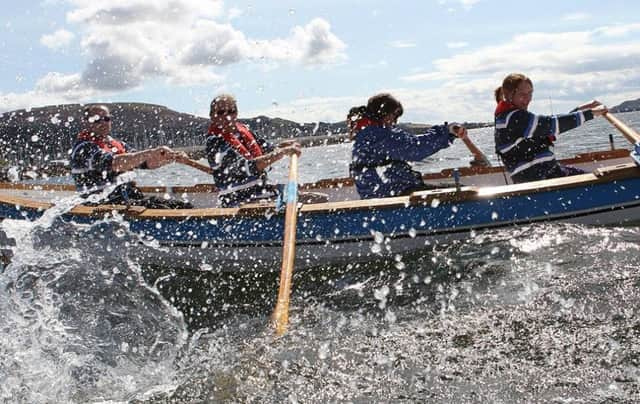Joanne Orr: Recreating the interwoven fabric of our culture


What makes up cultural heritage? We often tend to think first of the tangible elements; a Paisley shawl, the Ring of Brodgar, a Fair Isle jumper or the Antonine Wall. However, there is increasing international recognition of the idea that culture goes far beyond the physical manifestations to encompass the intangible elements such as the traditions or living expressions of communities and individuals. Consider how important oral traditions, performing arts, rituals and festive events are to Scotland’s cultural heritage. How crucial the knowledge and skills behind traditional crafts – a particular Fair Isle or gansey pattern – are to our heritage. This intangible cultural heritage (ICH) is a vital factor in cultural identity and promotes creativity and the flourishing of cultural diversity.
Scotland is taking an inclusive approach to ICH with a definition that embraces what we would traditionally think of as Scottish ICH and the ICH that is happening in Scotland, such as migrant community practices. We celebrate where fusion and intercultural dialogue emerges with examples such as the haggis pakora or Polish ceilidhs in Leith.
Advertisement
Hide AdAdvertisement
Hide AdWe recognise that our view of culture and what we consider to be important is constantly changing. Right now we are reconceptualising and recognising the fluidity of heritage as something dynamic, something that we get involved in and do rather than passively observe. We know that people are at the heart of the creation and perpetration of ICH and that communities create, carry and transmit ICH. The whole identity of some communities will be intrinsically interlinked with their own ICH.
A community might share an expression of ICH that is similar to one practiced by others – either in Scotland or with other countries and cultures – egg rolling at Easter or guising or apple dunking at Halloween – but communities might have their own unique way of carrying out the tradition. We have individuality but often we can be linked with a common thread. The process of understanding ICH can play an essential role in tolerance and harmonious interaction between cultures.
Communities are very much in the driving seat when it comes to ICH – deciding what to value and what traditions to continue to practice. It is continuously being recreated and it evolves as communities adapt their practices and traditions in response to their environment. However, external influences that shape the development of ICH can also be a threat, especially in countries where there is a lack of resources for safeguarding the heritage. Some forms of ICH are threatened by factors such as globalisation, cultural standardisation, armed conflict, and the consequences of mass tourism, industrialisation, rural exodus, migration and environmental deterioration.
Our cultural participation is intrinsically linked to our identity and we can hold multiple levels of identity, from national to local, a Fifer or an Aberdonian or to being a knitter, a coastal rower or an angler. If that identity is controversial it can lead to the infringement of our human rights and active suppression of minority ICH.
Although the UK has not signed the Unesco’s 2003 Convention for the Safeguarding of Intangible Cultural Heritage, Scotland is making a major contribution to the development of ICH best practice. Museums Galleries Scotland is driving the debate by hosting an international symposium on ICH in a multicultural context in Edinburgh on 4 November. For Everyone: The Role of Living Culture in Identities and Sustainable Community Development will provide a platform for discussions on global policy thinking on ICH in the context of human rights. It is the first event of its kind in the UK.
Looking at ICH practices nearer to home, MGS has redeveloped a website that records ICH in Scotland. Our inclusive approach is applied to the website which is why you will see Dragon Boat Racing in Tayside, which has been happening in Scotland for a decade appear beside Burning of the Clavie in Moray which dates back to the 17th century. The website follows the Wikipedian model where people can add to another listing as well as create their own. This means that the inventory can be as dynamic as the practices it illustrates.
We are asking the public to post examples of ICH and contribute their own first-hand accounts. This will help us to gather that all-encompassing holistic view of the interwoven fabric of Scotland’s cultural heritage.
So what makes Scotland, Scotland? What makes us as a nation tick? What are the practices and traditions that you would want your children to know about and share with their children? Read what has been included and contribute your own examples at ichscotland.org.
Advertisement
Hide AdAdvertisement
Hide Ad• Joanne Orr is the chief executive of Museums Galleries Scotland
• The MGS Symposium For Everyone: The Role of Living Culture in Identities and Sustainable Community Development with be streamed live on 4 November.
Visit museumsgalleriesscotland.org.uk for more information and contribute your own examples at ichscotland.org.
SEE ALSO